Dr Deepti Navaratna’s book, ‘The Maverick Maharaja' captures the life times of His Highness Maharaja Jayachamarajendra Wadiyar’

Deepti’s book is a paradoxical portrait of a man who embodied the wisdom of the East and sensibilities of the West with great equanimity. (Supplied)
Maverick Maharaja is a first-of-its-kind book that serves as a record to know the “life and times” of Jayachamarajendra Wadiyar (JCW). The book undoubtedly captures a life of great paradoxes and passion, of great pomp and predicaments, of legacies and litigations.
Deepti Navaratna’s book is a paradoxical portrait of a man who, by all means, embodied the wisdom of the East and sensibilities of the West with great equanimity.
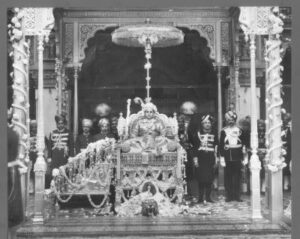
Born after World War I in 1919 in Mysore, thrust onto the throne in 1940, on the anvil of World War II, his tenure was indeed in testing times. (Supplied)
“To relinquish royal power and find a life of significance is the crown jewel in this Raja’s story. Through Deepti’s rich tapestry of words, this aspect is well-showcased,” adds daughter Maharajakumari Kamakshi Devi Wadiyar.
“Wadiyar had composed 94 kritis in 94 different ragas in a span of 28 months — from August 1945 to December 1947! On closer inspection, one can find a mind firmly crowned in divine grace, drenched in creative shakthi!” concludes the author in the 15th chapter.
“It is far harder to bring out the man amidst the myriad list of his sparkling achievements. I am happy that this book efforts to showcase it beautifully,” says JCW’s daughter Maharajakumari Indrakshi Devi Wadiyar.
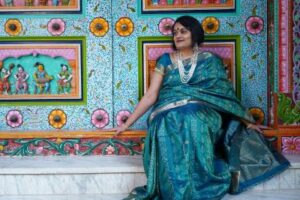
Deepti Navaratna is a Bengaluru-based neuroscientist and an accomplished Carnatic vocalist. (Supplied)
Deepti Navaratna is a Bengaluru-based neuroscientist and an accomplished Carnatic vocalist. She served as the Executive Director of IGNCA Bengaluru and is furthermore the TV Raman Pai Chair Professor at the National Institute of Advanced Studies (NIAS) Bengaluru.
She moved to the US in 2002 to get a PhD degree in Biomedical Sciences and Neuroscience. However, “music brought me over to India, to the arts institute IGNCA. Here, I continued to explore as a musician, neuroscientist and cultural entrepreneur, my interests in writing not withstanding,” shares Deepti.
On the occasion of the Maharaja’s 104th birthday on 18 July, 2023, in an exclusive chat with South First, Deepti talks about her effort in portraying the Maharaja’s exuberant interests in politics and arts.
Q. What is the approach you adopted for this book?
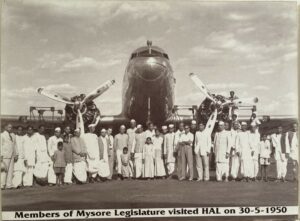
As a newly coronated king and lad of 21, he cleared the runway for India’s defence aerospace industry. (Supplied)
A. I have taken a know-the-man-through-his-muse approach to unravel the genius of JCW. My attempt is to capture the life a man, who straddled classical and contemporary sensibilities as a statesman, scholar and musician.
There is a good amount of archival content drawn from the Mysore Administrative reports, including the Mysore Bulletins (1940-1950) that speak of his many administrative successes.
In the truest sense of the Indian concept of the avadhuta, he navigated the many transformations of power from monarch to Rajapramukh to Governor of Mysore with a song in his heart and the piety of a saint.
Q. Why did you want to write about the Maharaja in particular?
A. Mysore has a staggering presence in the political and cultural psyche of South India. Yet, few contemporary perspectives are available for national and international consumption.
Even after 49 years since his passing, there is no English biography of his extraordinary life.
Through an insight into JCW’s life, I hope to give access to young readers looking at history for inspirational figures.
Q. Was Jayachamarajendra Wadiyar a befitting inheritor of ‘Rajarishi’ Nalvadi’s Krishna Raja Wadiyar’s legacy, who undoubtedly gave new meaning to the phrase ‘the people’s Maharaja’?
A. Mysore’s intellectual and philharmonic culture could be best understood by the devices that celebrated this inter-culturalism. A pianist, JCW led the way by inventing ragas based on Western tonal vocabulary and by writing Carnatic compositions for Western instruments.
Ragas invented by JCW are not merely “sisters” of allied Carnatic Ragas. They embody a grammar of Western, blues and jazz music brought into the world of raga construction.
Q. What about the Maharaja’s many gifts to modern India, starting with the Hindustan Aeronautics Limited in 1940?
A. As a newly coronated king and lad of 21, he cleared the runway for India’s defence aerospace industry. The Hindustan Aircraft Company kick-started the era of great aeronautical st(rides) for India.
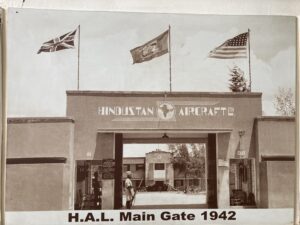
The Hindustan Aircraft Company kickstarted the era of great aeronautical strides for India. (Supplied)
JCW gifted to the nation its very first research institute on food technology, the Central Food Technology Research Institute (CFTRI).
Besides, he gave his mansion ‘Avalon’ to house ‘The National Tuberculosis Institute’. He also provided the land and means to make Nobel Laureate Sir C V Raman’s dream a reality at the Raman Research Institute.
The administrative will of JCW made it possible to establish the All India Institute for Speech and Hearing (AISH).
Mysore’s first private broadcasting radio station, Akashvani, was started in his reign, which then became the All India Radio.
JCW’s vision and activism for protection of India’s wildlife as the Chairman of the Indian Wildlife Board remains enshrined as the many national sanctuaries: Gir, Chandraprabha, Bandipur, and Ranganatittu.
Q. Can you trace the philharmonic spirit of Mysore in which the musical sensibilities of Jayachamarajendra Wadiyar were groomed?
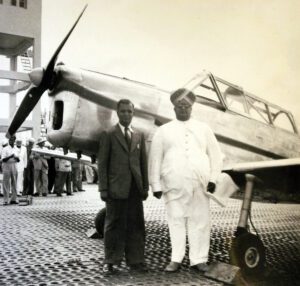
Thanks to the visionary leadership of the Maharajas in creating entrepreneurial ventures, Mysore is a global brand. (Supplied)
A. In sync with the intellectual movement of the Philharmonia Societies in London, Nalvadi Krishnaraja Wadiyar started a philharmonic orchestra in 1921.
It kickstarted a renaissance of instrumental music, which looked at the Western classics and world music for inspiration. Lavish sums were spent on importing the very best of instruments. The horn violin, the electronic theremin and calliaphone were reported to be part of such experimental encounters in Mysore.
Through JCW’s benefaction, the philharmonia spirit was revitalised in England too.
This resulted in a historic series of concerts and recordings called the “Mysore Concerts” with the Philharmonia Concert Society. Understandably, he was the first president of the Philharmonia Concert Society, London, in 1948.
Q. What about Jayachamarajendra Wadiyar’s raga-construction that saw him assimilate a grammar of Western, blues and jazz…?
A. A whopping two-thirds of the compositions are in rare, extant and new ragas. The rest are in established scales of Carnatic music.
Ragas like Lalitha Panchama, Bhupalapanchama, Shuddha Lalitha, Shuddha Todi, and Bhairava were given the form and life as a kriti.
In this sense, many of the scales he brought to life as ragas are his. Some forty-odd kritis are eka-Raga kritis, which means the only kriti available in these ragas today are his.

May 19, 2024

May 18, 2024

May 18, 2024

May 18, 2024

May 18, 2024

May 18, 2024